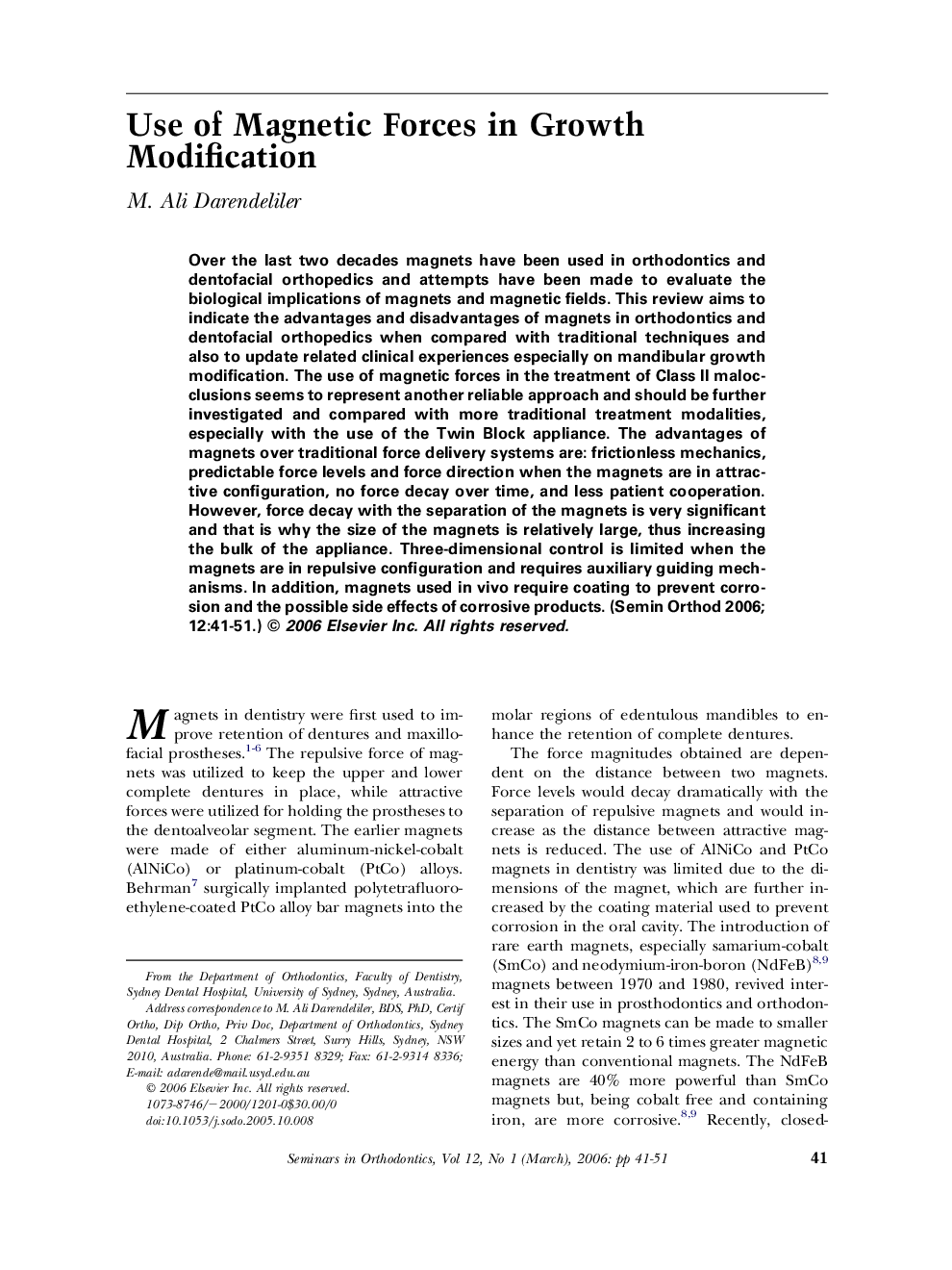| Article ID | Journal | Published Year | Pages | File Type |
|---|---|---|---|---|
| 3175812 | Seminars in Orthodontics | 2006 | 11 Pages |
Over the last two decades magnets have been used in orthodontics and dentofacial orthopedics and attempts have been made to evaluate the biological implications of magnets and magnetic fields. This review aims to indicate the advantages and disadvantages of magnets in orthodontics and dentofacial orthopedics when compared with traditional techniques and also to update related clinical experiences especially on mandibular growth modification. The use of magnetic forces in the treatment of Class II malocclusions seems to represent another reliable approach and should be further investigated and compared with more traditional treatment modalities, especially with the use of the Twin Block appliance. The advantages of magnets over traditional force delivery systems are: frictionless mechanics, predictable force levels and force direction when the magnets are in attractive configuration, no force decay over time, and less patient cooperation. However, force decay with the separation of the magnets is very significant and that is why the size of the magnets is relatively large, thus increasing the bulk of the appliance. Three-dimensional control is limited when the magnets are in repulsive configuration and requires auxiliary guiding mechanisms. In addition, magnets used in vivo require coating to prevent corrosion and the possible side effects of corrosive products.
